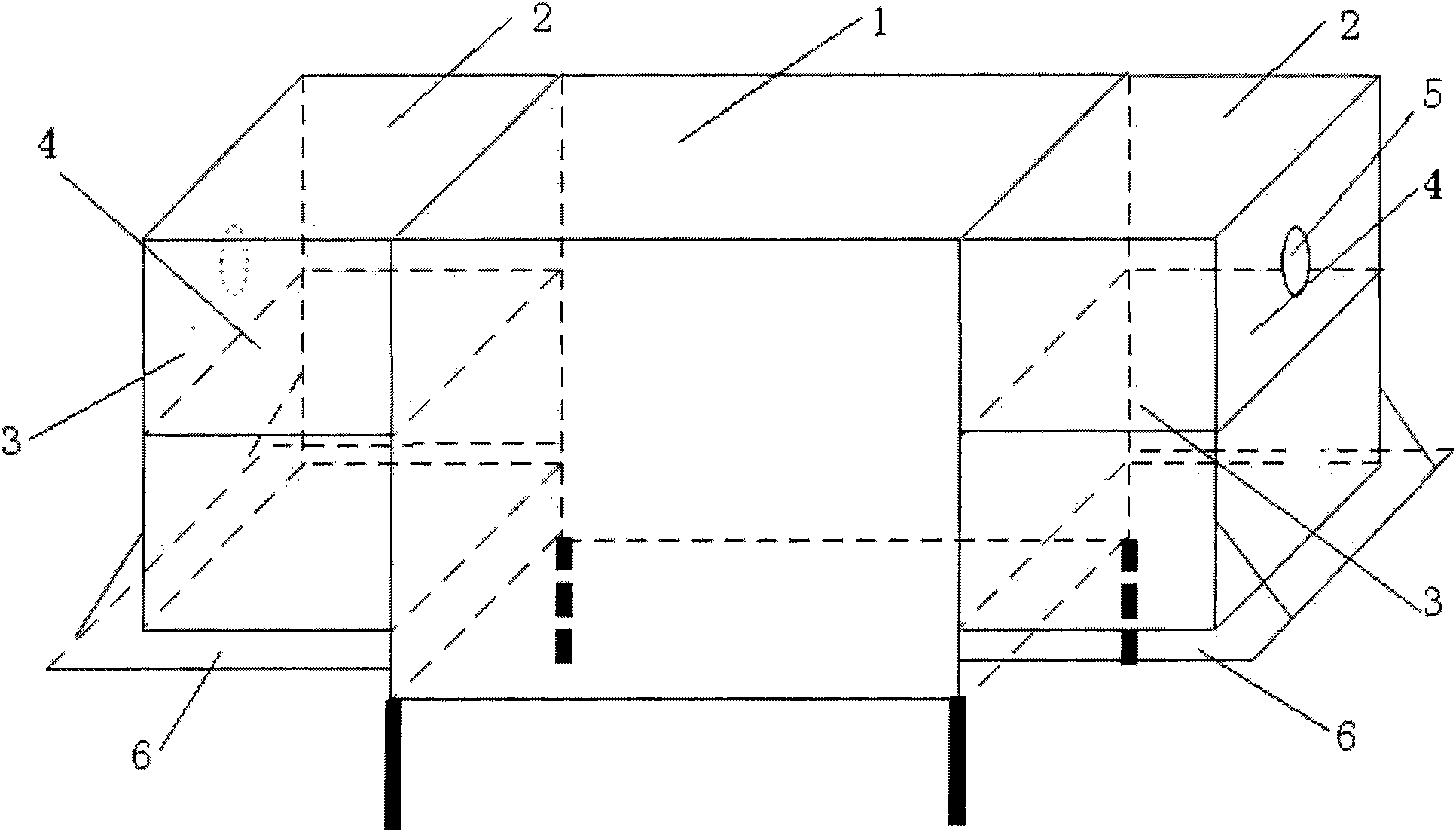Housefly breeding device and breeding method thereof
A breeding method and technology for housefly, applied in the direction of animal husbandry, etc., can solve the problems of cross infection, complicated operation, low production efficiency, etc., and achieve the effect of preventing escape and simple operation.
- Summary
- Abstract
- Description
- Claims
- Application Information
AI Technical Summary
Problems solved by technology
Method used
Image
Examples
Embodiment 1
[0027] 1, 30,000 housefly pupae are put into the pupa basin frame 4 of the attached cage 2 of the fly cage.
[0028] 2. Milk powder is added with water to prepare a food liquid with a concentration of 80-95% by mass, which is ready for use.
[0029] 3. After 5% of the pupae have emerged, brush the food liquid on 3 places on the brushing net surface, and brush once every two hours for the flies to feed on. The area and frequency of brushing can be adjusted according to the number and food intake of the flies. The indoor temperature where the cage is located needs to be between 25-35°C, and the humidity should be between 50-70%.
[0030] 4. The ovum-attracting material for breeding flies is wheat bran+ammonia water (volume concentration of 1 / 10,000), and its mass percentage concentration is 60%. The egg-inducing material is contained in a 35cm×55cm×5cm egg-inducing basin, and the thickness of the egg-inducing material is about 2cm. The surface of the ovum-inducing material is...
Embodiment 2
[0032] 1, 35,000 housefly pupae are put into the pupa basin frame 4 of the attached cage 2 of the fly cage.
[0033] 2. Milk powder and brown sugar with a mass ratio of 1:1 are added with water to prepare a food liquid with a mass percentage concentration of 80-95%, which is set aside.
[0034] 3. After 5% of the pupae have emerged, brush the food liquid on 3 places on the brushing net surface, and brush once every two hours for the flies to feed on. The area and frequency of brushing can be adjusted according to the number and food intake of the flies. The indoor temperature where the cage is located needs to be between 25-35°C, and the humidity should be between 50-70%.
[0035] 4. The ovum-attracting material for species of flies is wheat bran+ammonia water (volume concentration of 1 / 10,000), and its mass percentage concentration is 70%. The egg-attracting material is contained in a 35cm×55cm×5cm egg-inducing basin, and the thickness of the egg-inducing material is about ...
Embodiment 3
[0037] 1, 40,000 housefly pupae are put into the pupa basin frame 4 of the attached cage 2 of the fly cage.
[0038] 2. Add water to the maggot slurry to prepare a food solution with a mass percentage concentration of 80-95%, and set it aside.
[0039] 3. After 5% of the pupae have emerged, brush the food liquid on 3 places on the brushing net surface, and brush once every two hours for the flies to feed on. The area and frequency of brushing can be adjusted according to the number and food intake of the flies. The indoor temperature where the cage is located needs to be between 25-35°C, and the humidity should be between 50-70%.
[0040]4. The ovum-attracting material for species of flies is wheat bran+ammonia water (volume concentration of 1 / 10,000), and its mass percentage concentration is 80%. The egg-inducing material is contained in a 35cm×55cm×5cm egg-inducing basin, and the thickness of the egg-inducing material is about 3.5cm. The surface of the ovum-inducing mater...
PUM
 Login to View More
Login to View More Abstract
Description
Claims
Application Information
 Login to View More
Login to View More - R&D
- Intellectual Property
- Life Sciences
- Materials
- Tech Scout
- Unparalleled Data Quality
- Higher Quality Content
- 60% Fewer Hallucinations
Browse by: Latest US Patents, China's latest patents, Technical Efficacy Thesaurus, Application Domain, Technology Topic, Popular Technical Reports.
© 2025 PatSnap. All rights reserved.Legal|Privacy policy|Modern Slavery Act Transparency Statement|Sitemap|About US| Contact US: help@patsnap.com

